Fermenting Beer with White Labs WLP540 Abbey IV Ale Yeast
Published: October 13, 2025 at 5:31:22 PM UTC
Last updated: November 27, 2025 at 12:33:48 PM UTC
The Abbey IV ale yeast from White Labs is tailored for dubbels, tripels, and Belgian strong ales, and is known for its warm phenolics and spicy esters. These characteristics are key to defining the classic Belgian ale flavor.
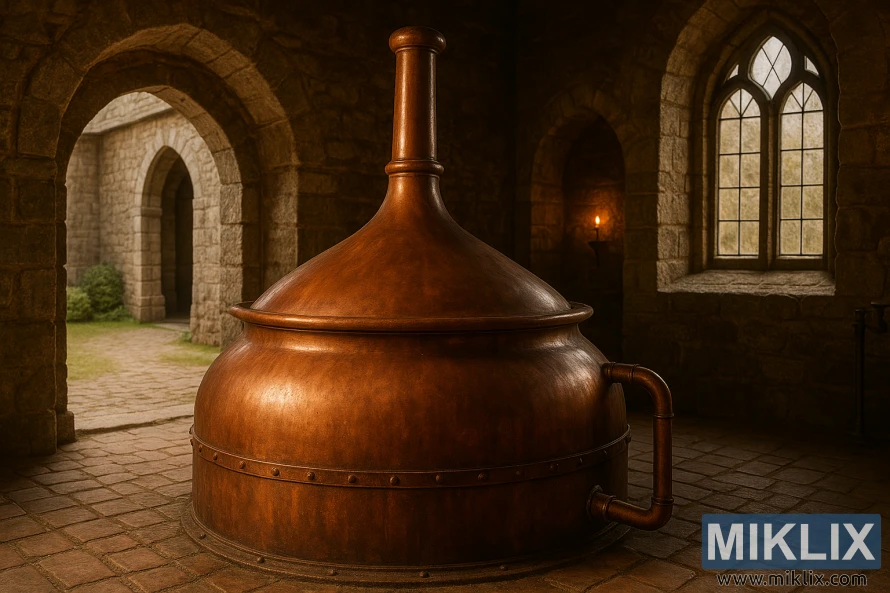
Key Takeaways
- White Labs WLP540 Abbey IV Ale Yeast is tailored for dubbels, tripels, and Belgian strong ales.
- This WLP540 review emphasizes predictable phenolic and ester profiles.
- Fermenting with WLP540 benefits from careful temperature management and proper pitching.
- Expect a full-bodied finish that supports candi sugar and rich malts.
- Later sections detail specs, starters, oxygenation, and packaging tips for best results.
Overview of White Labs WLP540 Abbey IV Ale Yeast
White Labs WLP540 Abbey IV Ale Yeast is a key strain from White Labs, identified by part number WLP540. It's favored for abbey-style beers like Belgian Dark Strong Ale, Belgian Dubbel, Belgian Pale Ale, and Belgian Tripel.
The White Labs Abbey IV description emphasizes its organic availability and a STA1 QC result marked negative. This profile helps brewers steer clear of excessive dextrinase activity. At the same time, it retains classic Belgian ester notes.
Practically, the Belgian yeast overview portrays this strain as one that offers balanced fruit aroma and flavor. It produces estery pear and stone fruit notes. These are perfect for dubbels and tripels, enhancing the malt and hops without overpowering them.
WLP540 overview reveals it finishes well for strong Belgian styles. It brings signature Belgian ester and fruit character. This allows fermentation to reach a clean terminal gravity, ideal for conditioning and aging.
- Manufacturer: White Labs
- Part name: WLP540 Abbey IV Ale Yeast
- Type: Core strain; organic option available
- STA1 QC: Negative
Why Choose White Labs WLP540 Abbey IV Ale Yeast for Belgian Ales
WLP540 offers a balanced fruit aroma and flavor, enhancing the classic ester profile of abbey-style beers. It's ideal for brewers seeking moderate fruity notes without harsh phenolics. This strain ensures a traditional Belgian character in your brews.
It's versatile for a range of Belgian styles. Use it for Belgian Dark Strong Ale, Belgian Pale Ale, Belgian Dubbel, and Belgian Tripel. Its attenuation and flocculation capabilities are perfect for both medium-bodied dubbels and higher-gravity tripels.
Many homebrewers and professionals consider WLP540 the best yeast for dubbels. It accentuates malt complexity while keeping esters in check. This preserves the caramel and dark fruit flavors typical of dubbels, without overpowering them.
When brewing a Belgian tripel, WLP540 offers clean fruitiness and sufficient attenuation for a dry finish. This balance allows the spicy hop and malt backbone to stand out in higher-gravity beers.
White Labs offers WLP540 as a Core strain with an organic option. This makes it attractive to brewers seeking consistent, commercial-grade performance and organic labeling. The availability of both standard and organic packs simplifies inventory choices for breweries and serious homebrewers.
- Flavor profile: restrained esters and gentle fruit notes that complement abbey recipes.
- Applications: dubbels, tripels, Belgian strong ales, and pale abbey styles.
- Benefits: reliable attenuation range, predictable fermentation, and commercial consistency.
Match pitching and temperature control to gravity and recipe for the desired WLP540 flavor and mouthfeel. Proper management allows the strain to highlight the best aspects of abbey-style brewing. This way, it showcases the malt and spice elements without masking them.
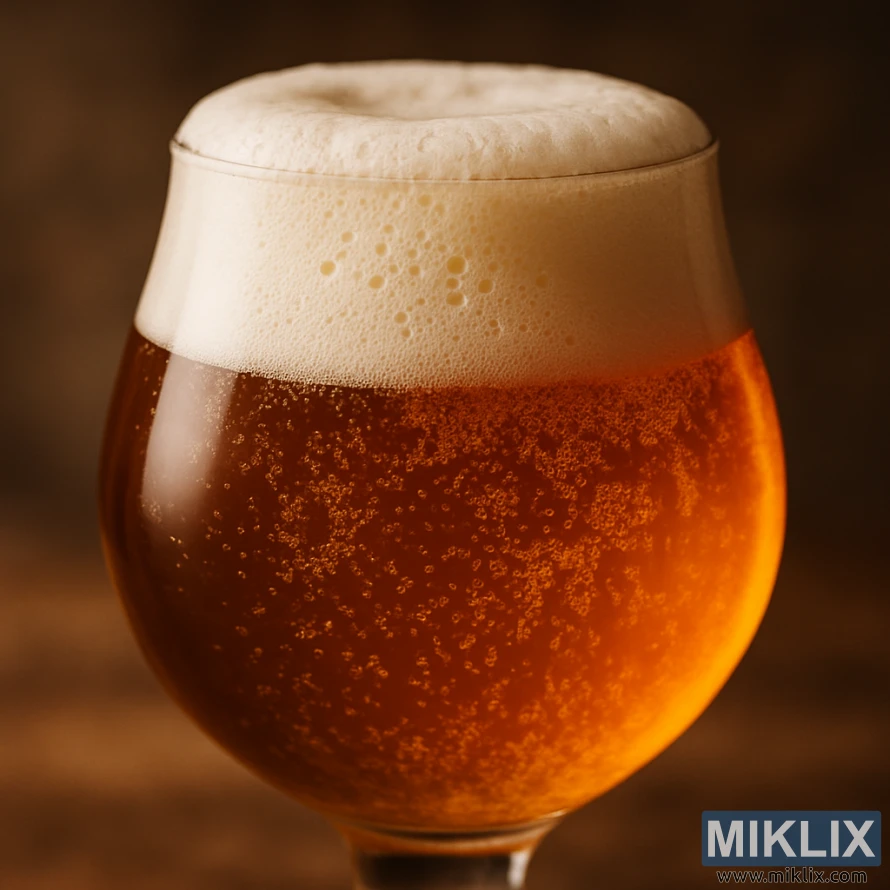
Specifications and Lab Data for WLP540
The WLP540 specifications are crucial for brewers planning their brews. White Labs indicates an attenuation range of 74%–82% and a medium flocculation profile. These figures are key to predicting the final gravity and clarity of the beer before packaging.
Cell count is vital for calculating starters and pitch rates. A source mentions approximately 7.5 million cells per milliliter for this strain. This information is essential for sizing starters or adjusting pitch rates for high-gravity beers.
Alcohol tolerance varies based on strain behavior and fermentation conditions. Some sources suggest a medium tolerance of 5–10% ABV. Others extend this to 10–15% ABV. The higher tolerance should be viewed as conditional, influenced by pitching rate, oxygenation, and nutrient availability.
- Fermentation temperature: 66°–72° F (19°–22° C) as the working range.
- STA1: Negative, indicating no diastatic activity from this strain.
- Packaging: Available as a White Labs core strain and in organic formats for brewers seeking certified inputs.
When planning a Belgian-style ale, align the WLP540 specifications with your recipe goals. Focus on attenuation for the desired ABV, monitor flocculation for clarity, and use the reported cell count to avoid underpitching. Be mindful of alcohol tolerance when brewing high-gravity beers to ensure a clean, controlled fermentation.
Optimal Fermentation Temperature and Management
White Labs suggests fermenting WLP540 between 66°–72° F (19°–22° C). This range is ideal for Belgian ales. It provides a solid foundation for brewing with this yeast.
Many brewers opt for a more gentle approach. They start by pitching a strong starter and keeping the temperature between 60°–65° F for 48–72 hours. This helps slow down the formation of esters. Once fermentation is underway, they gradually increase the temperature to around 70° F. This method helps achieve a balanced ester profile and complete attenuation.
WLP540 does not handle sudden temperature changes well. Abrupt shifts or large daily fluctuations can stress the yeast. This can slow down or even stop fermentation. Thus, it's crucial to focus on maintaining steady temperatures during fermentation.
Tools like temperature-controlled fermentation chambers, inkbird controllers, or simple wraps with thermostats can help maintain consistent temperatures. Gradually increasing the temperature by 1–2° F every 12–24 hours minimizes yeast shock.
Be prepared for a longer fermentation and conditioning period. WLP540 often takes its time, so allow extra days in primary fermentation and several weeks for conditioning. Patience is key to achieving clear and stable flavors with this yeast.
- Hold early fermentation slightly cool to control esters.
- Use gradual temperature ramping WLP540 to guide final flavor.
- Maintain steady conditions for sound Belgian yeast fermentation management.
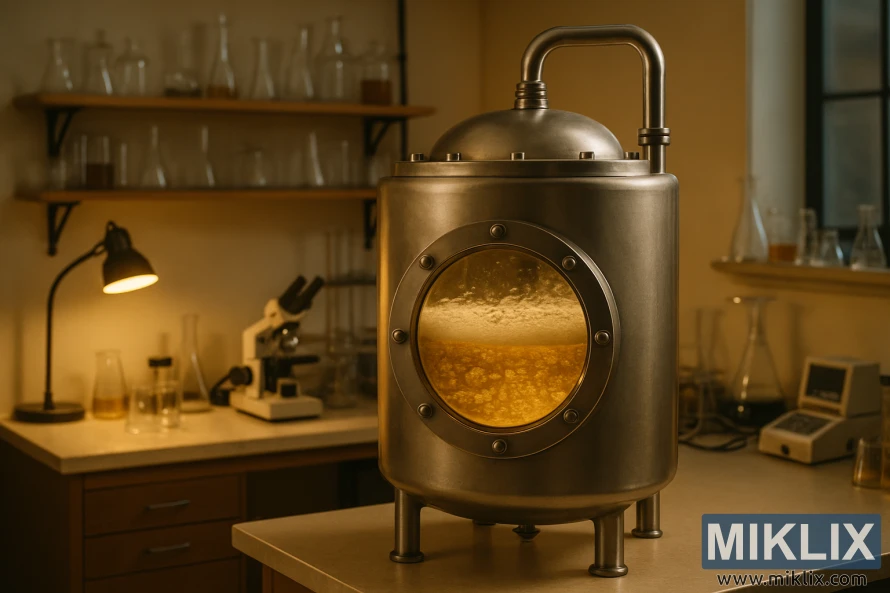
Pitching Rates, Starters, and Oxygenation
Begin by calculating cell needs based on a 7.5 million cells/mL reference. For a 5-gallon batch at typical Belgian strong ale gravities, aim to exceed standard ale rates. This is crucial to avoid sluggish starts. Adjust the WLP540 pitching rate upward for higher original gravities. Target attenuation should be around 74–82%.
Many brewers find that a very large, active starter prevents underpitching issues with this strain. Plan to grow yeast starters WLP540 aggressively over 48–72 hours. A concentrated slurry, roughly equivalent to one cup, can be suitable for certain homebrew batches. Scale that volume to match your batch size and gravity.
- Make the starter with generous aeration and healthy wort.
- Keep the starter warm enough for rapid growth, then cool to pitching temperature near 60° F.
- Pitch while the starter is actively fermenting, not after full flocculation.
Oxygenation is key for WLP540. Use pure oxygen or vigorous shaking to reach dissolved oxygen levels that support fermentation. Under-oxygenation often leads to stalled or phenolic fermentations with Belgian strains.
For high-gravity Belgian ales, increase starter volume or combine multiple packs and slurries to ensure adequate cell mass. Monitor krausen and specific gravity drops closely. A robust initial krausen signals correct WLP540 pitching rate and starter vitality.
Handle starters with care: swirl to resuspend before measuring, avoid excessive contamination risk, and allow the starter to settle slightly if you need to decant. When in doubt, err on the side of more viable cells and thorough oxygenation. This promotes a clean, complete fermentation.
Sensitivity and Common Fermentation Issues with WLP540
WLP540 sensitivity manifests when fermentation conditions are unstable. Homebrewers often encounter this strain's sensitivity to rapid temperature changes, insufficient oxygen at pitching, and small yeast populations.
Stalled fermentation with WLP540 can start with slow activity in the first week. Brewers observe low apparent attenuation at 1–1.5 weeks, with readings near 58% when more fermentable sugars were anticipated.
Higher mash temperatures and recipes rich in adjuncts exacerbate the issue. Such conditions stress the yeast, leading to sluggish or stalled fermentation with WLP540.
Symptoms include prolonged lag times, slow gravity drop, and extended weeks to reach final gravity. These signs often appear when underpitching or neglecting oxygen during wort cooling and transfer.
- Use large, active starters to avoid underpitching and to reduce WLP540 sensitivity.
- Carefully oxygenate wort before pitching to support early cell growth.
- Keep fermentation temperatures steady within the recommended range for Belgian strains.
For mash planning, aim for a lower saccharification range. Mashing near 150°F for 90 minutes tends to yield a more fermentable wort for WLP540, lowering the chance of stalled fermentation WLP540.
When gravity stalls, consider patient extended fermentation for 4+ weeks. If gravity remains high after extended conditioning, re-pitching a high-attenuating strain like Saccharomyces cerevisiae 3711 may be necessary.
Track gravity readings and tasting notes as you proceed. These records facilitate WLP540 troubleshooting, helping to avoid repeating stressors in future brews.
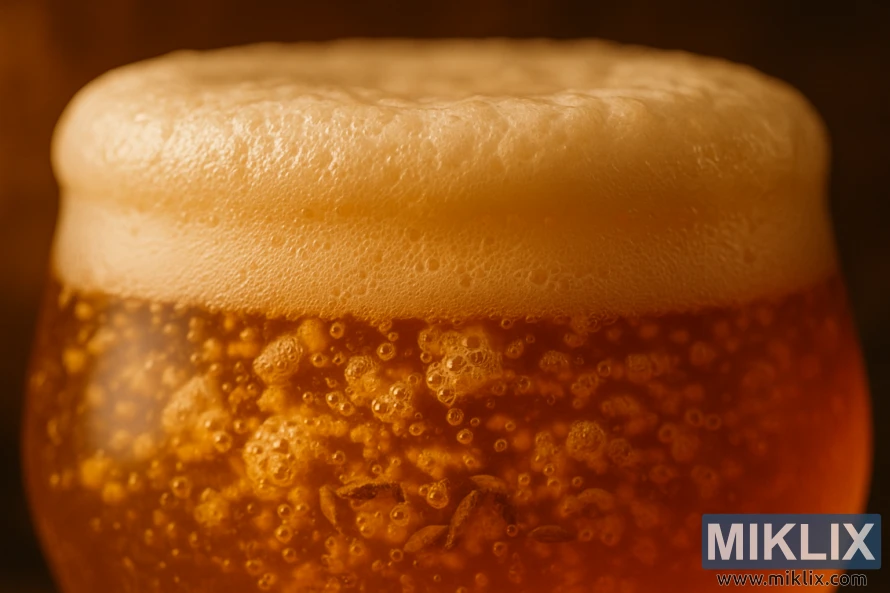
Mash, Adjuncts, and Wort Considerations for Best Results
When brewing with WLP540, aim for mash targets that enhance fermentability. Many brewers target a mash temperature of around 150° F for 60–90 minutes. This approach yields a more fermentable wort. Lowering the mash temperature with WLP540 reduces dextrins, allowing the yeast to reach higher attenuation without stressing them.
Adjuncts can significantly boost alcohol and lighten the body of Belgian ales when used judiciously. Fermentable additions like Belgian candi syrup, dextrose, or light DME can increase attenuation, leading to a drier finish. It's crucial to balance these with a small amount of crystal malts to avoid a high final gravity.
During mash and sparge, keep a close eye on the wort considerations for WLP540. Limit the use of heavy caramel and roasted malts, as they can impact fermentability. Oversparging can dilute enzyme activity, so it's important to control run-off volumes and aim for your target pre-boil gravity.
- Grain bill balance: Use a Belgian Pilsner malt base with small amounts of Special B or Caramunich for color and flavor.
- Fermentables: Incorporate clear or dark Belgian candi syrup, X‑Light DME, or cane sugar for higher attenuation.
- Untyped adjuncts: Flaked oats or flaked corn can enhance mouthfeel, but use them sparingly to avoid stalling.
Wort fermentability with WLP540 can be managed through process controls. Long, vigorous boils near 60–90 minutes are beneficial. They isomerize hop compounds and darken candi sugars, concentrating the wort. This ensures gravity and flavor contributions remain predictable. Monitor boil-off to avoid high volumes and manage gravity rises.
To achieve a dry Belgian ale, plan your mash, adjuncts, and sparge steps carefully. Use pilsner malts and limit caramel additions. Add simple sugars late in the boil or at flameout. This approach improves attenuation while preserving the yeast's fruity and phenolic characteristics.
Practical tips include frequently measuring original gravity, step mashing only if needed for more dextrins, and ensuring proper oxygenation before pitching. Attention to WLP540 mash temperature and wort considerations will reduce yeast stress. This results in cleaner, more consistent Belgian ales.
Fermentation Timeline and Conditioning Recommendations
WLP540 fermentation is slower than many ale strains. Krausen forms and drops in two to four days. Gravity falls slowly over several weeks.
Start cold for the first 48–72 hours at 60–65° F. This promotes a clean, controlled start. Then, raise to about 70° F for steady activity. Some brewers move into the low 70s late in fermentation to coax final attenuation.
Monitor specific gravity rather than relying on visual cues alone. An example user timeline showed krausen down after three days, gravity at 1.044 after seven days, and 1.042 at ten days. This indicated partial attenuation and a need for extended conditioning.
Allow at least four weeks of combined primary and conditioning time for WLP540. Give the beer more time rather than troubleshooting too early. Extended aging helps flavor integration and gives the yeast a chance to finish attenuation on its own.
If final gravity remains stubbornly high after extended conditioning, consider repitching a high-attenuating strain. Wyeast 3711 or a similar robust Belgian strain can finish fermentation without harming the ale’s character.
- Initial 48–72 hours: 60–65° F
- Active fermentation ramp: 70° F
- Extended conditioning: 4+ weeks
- Troubleshoot: repitch with a high-attenuating strain if FG stays high
Conditioning WLP540 benefits from patience and measured temperature control. Plan the schedule with Belgian ale conditioning time in mind. This ensures the beer reaches target gravity and balanced flavor before packaging.
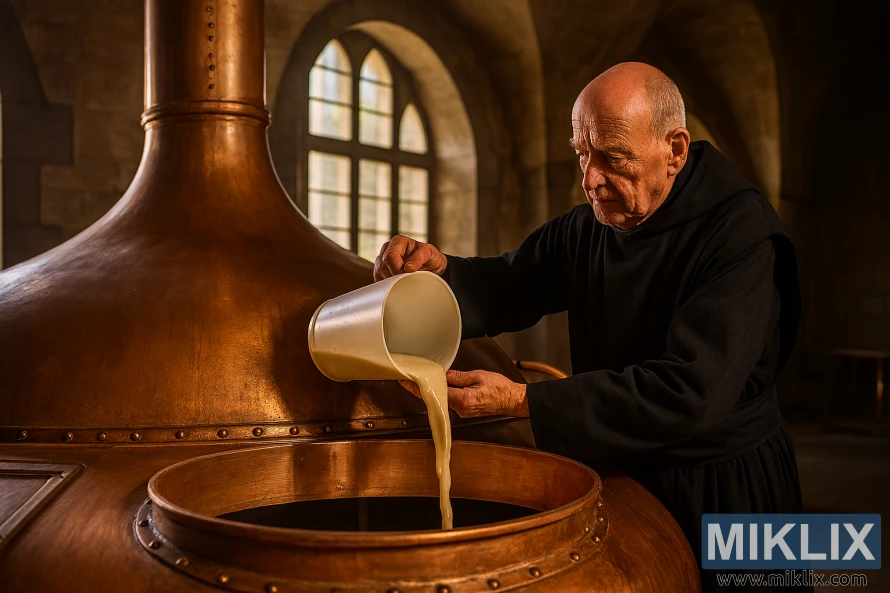
Packaging, Aging, and Bottle Conditioning with WLP540
WLP540 bottle conditioning requires patience. It exhibits medium flocculation and a slower attenuation rate. This means carbonation and flavor development take longer than with faster-finishing ale strains.
Before packaging Belgian ales, ensure a stable final gravity over several days. This step reduces the risk of over-pressurization and keeps bottles safe during conditioning.
Adopt this simple carbonation strategy for WLP540. If fermentation stalls or final gravity is uncertain, wait for the yeast to finish. Prime only after the FG stabilizes to avoid overcarbonation.
- Measure FG twice, 48 hours apart, before priming.
- Prime conservatively for high-ABV beers and stronger styles.
- Consider sturdy bottles, like 22 oz, only after FG is confirmed.
Cold conditioning aids in clearing beer before packaging due to WLP540's medium flocculation. Avoid chilling the yeast too much during cold rests to ensure it completes attenuation.
Aging Abbey yeast beers rewards patience. Belgian strong ales and dubbels gain a smoother mouthfeel and melded fruit character after months of bottle or barrel aging.
Plan aging timelines based on strength and complexity. Lower-ABV Belgian styles may be drinkable in weeks. Strong ales, on the other hand, benefit from three to twelve months of maturation to reach balance.
For packaging Belgian ales, choose closures and bottles rated for the expected carbonation level. Labeling release dates and expected conditioning times helps set expectations for drinkers.
When bottling with WLP540 bottle conditioning in mind, document FG, priming amounts, and conditioning temperature. This record helps reproduce desired results and prevents issues in future batches.
Practical Brew Day Recipe Notes and Example Recipes
Plan recipes to highlight WLP540’s fruit esters and moderate attenuation. Aim for a fermentability target of 74–82% by keeping mash temps low and including a portion of simple sugars. A WLP540 recipe that balances Belgian Pilsner Malt with controlled adjuncts will let the yeast express character without leaving a heavy finish.
Use a lower saccharification temperature near 150° F and lengthen the mash to about 90 minutes. This increases fermentability and helps WLP540 reach expected attenuation. For high-gravity beers, build a starter or pitch multiple vials to ensure a healthy fermentation.
Limit specialty and crystal malts. Reserve Caramunich or Caramalt for color and gentle caramel notes, used sparingly. For a Belgian dubbel recipe, add darker candi sugar and a touch of Caramunich to achieve the amber-to-brown hue while avoiding a high final gravity. For tripel recipe WLP540, favor clear candi syrup or dextrose to boost gravity and dry the finish.
- Base malt: Belgian Pilsner Malt as primary grain.
- Gravity boosters: Pilsen Light DME or X-Light DME for easier handling.
- Saccharides: Clear candi syrup for tripel recipe WLP540; D-180 or dark candi for Belgian dubbel recipe.
- Adjuncts: Flaked corn or dextrose in moderate amounts to tighten body and enhance dryness.
- Specialty malts: Small amounts of Caramunich or Caramalt; avoid heavy crystal additions.
Use an extended 90-minute boil when including candi syrups to promote Maillard reactions and improve wort stability. This step deepens flavor without relying on excessive specialty malts. For dubbels, add darker candi late in the boil to preserve aroma while coloring the beer.
Oxygenate wort thoroughly at pitch and monitor fermentation at cool ale temperatures that suit Belgian strains. If aiming for a richer ester profile, ferment at the higher end of WLP540’s range. For a cleaner, drier tripel recipe WLP540, keep temperatures steady and provide ample yeast health nutrients.
- Example tripel: Belgian Pilsner Malt 90%, Dextrose 10%, clear candi to reach OG, mash 150° F (90 min), 90 min boil.
- Example dubbel: Belgian Pilsner Malt 75%, Caramunich 8%, Pilsen DME boost, D-180 candi 10–12%, mash 150° F (90 min), 90 min boil.
Taste frequently during conditioning and adjust aging times to suit the beer style. With careful mash control and thoughtful use of sugars, a WLP540 recipe will showcase classic Belgian notes while delivering predictable attenuation and a balanced mouthfeel.
Real-World User Experiences and Community Tips
Homebrewers on BrewingNetwork and other forums highlight the sensitivity of WLP540. Posts on BrewingNetwork WLP540 threads, HomebrewTalk, and MoreBeer message boards reveal its reaction to pitch rate, oxygen, and temperature changes.
Community tips for WLP540 include practical advice to sidestep common issues. It's recommended to create a large, active starter to prevent underpitching. Also, ensure the wort is well-oxygenated and pitch the starter when it's around 60° F.
A typical fermentation plan involves:
- Pitch at about 60° F.
- Hold primary near 65° F for the first few days.
- Slowly ramp to about 70° F to finish attenuation.
- Allow extended conditioning; many suggest more than four weeks.
Personal trials on BrewingNetwork WLP540 threads reveal slow attenuation. Brewers note that a temperature ramp can awaken the yeast, moving the gravity down. Some users repitch with strains like Wyeast 3711 when final gravity stalls after long conditioning.
Best-practice consensus from multiple community tips WLP540 posts emphasizes avoiding high mash temps and excessive caramel malts. These inputs can leave sugars the yeast struggles to ferment.
Other clear takeaways from WLP540 user experiences include steady temperature control and patience. Keep temperatures steady, avoid swings, and expect a longer timeline than for many ale strains.
When troubleshooting, check pitch rate first. If attenuation stalls, consider adding a healthy starter or a complementary strain. Many brewers on BrewingNetwork WLP540 threads favor slow, steady handling over aggressive fixes.
Where to Buy, Organic Options, and Storage Tips
WLP540 can be found directly from White Labs and through reputable U.S. homebrew retailers. To purchase WLP540, look for the part number WLP540 on product listings. Ensure cold-chain handling is confirmed at checkout.
Homebrew shops like MoreBeer, Northern Brewer, and local brew stores often carry White Labs strains. Retailers focused on fresh yeast will ship with gel packs or refrigerated boxes. This is to protect the yeast's viability during transit.
For those requiring certified ingredients, WLP540 organic is available. White Labs offers an organic option for brewers needing organic labeling or preferring organic sources. When purchasing WLP540 organic, verify the label and batch notes to confirm certification.
Always store liquid yeast White Labs in the refrigerator. Maintain a temperature range of 34–40°F (1–4°C) to preserve cell health and activity. Always check expiration dates and use the freshest pack available, as lagers and complex ales require it.
When harvesting slurry, track generations and note pitch history. WLP540 can be more sensitive than some strains. Thus, prefer fresh packs or build a large, healthy starter rather than relying on aged slurry for critical batches.
- Order from established U.S. sellers to maintain cold-chain integrity during shipping.
- Refrigerate immediately on receipt and avoid temperature swings.
- Make a viability check or small starter before scaling up production.
For long-term storage, keep unused packs refrigerated and use within the manufacturer’s recommended window. If you plan frequent repitches, maintain good slurry hygiene and monitor yeast vitality. This is to protect batch quality.
Conclusion
White Labs WLP540 Abbey IV Ale Yeast offers a true abbey profile with proper handling. It is known for balanced fruit esters, solid attenuation (74–82%), and medium flocculation. This makes it perfect for dubbels, tripels, and Belgian strong ales, provided you follow the best practices for WLP540.
Success with White Labs WLP540 requires careful preparation. Start with generous starters and ensure reliable oxygenation. Use conservative mash temps around 150°F and maintain temperatures between 66°–72°F. Brewers must be cautious of underpitching and temperature swings. Plan for fermentation and conditioning of at least four weeks.
If fermentation stalls or the beer tastes under-attenuated, have a backup plan. Consider repitching with a more attenuative strain. Overall, fermenting with White Labs WLP540 demands patience and control. It's ideal for those seeking classic abbey character, willing to invest time and technique.
Further Reading
If you enjoyed this post, you may also like these suggestions:
- Fermenting Beer with Lallemand LalBrew Wit Yeast
- Fermenting Beer with Mangrove Jack's M84 Bohemian Lager Yeast
- Fermenting Beer with Lallemand LalBrew Munich Classic Yeast
